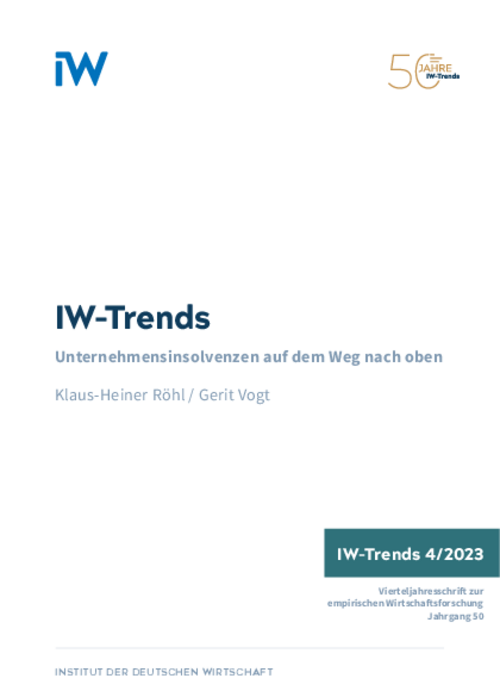After a prolonged decline, the number of corporate insolvencies has begun to rise again. The slight increase in 2022 could be interpreted as a step towards normalisation after the sharp drop experienced during the 2020/21 Covid19 pandemic.

Corporate Insolvencies on the Increase: Economic and Structural Influences Drive a Trend Reversal

After a prolonged decline, the number of corporate insolvencies has begun to rise again. The slight increase in 2022 could be interpreted as a step towards normalisation after the sharp drop experienced during the 2020/21 Covid19 pandemic.
However, a rise in insolvency cases of almost one-fifth is expected in 2023, a trend which is likely to continue in 2024. This uptick is being fuelled by high energy prices, rising interest rates and a struggling economy. Yet given the need to transform German business so as to eventually achieve climate neutrality, insolvencies should not be viewed as a purely negative phenomenon. Company closures are part of an indispensable restructuring process whereby resources are freed up in industries that are shrinking, only to be put to a new, economically more efficient use by companies, and indeed whole sectors, which are expanding. Skilled labour is one of the currently scarce resources to which this principle particularly applies.

Corporate Insolvencies on the Increase: Economic and Structural Influences Drive a Trend Reversal

More on the topic

Effects of the Middle East conflict on the German economy
Beyond the humanitarian crisis associated with the geopolitical conflict in Israel, which affects millions of human lives, the Middle East conflict also leaves lasting marks on economic activity not only in the affected region, but also in Germany and the ...
IW
Why Price Stability Matters
As of March 2023, overall infation is declining in Europe. However, core infation levels continue to remain well above the 2% mandate of the European Central Bank (ECB). In fact, the current bout of infation should continue to weaken as and when supply-chain ...
IW